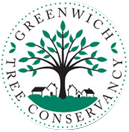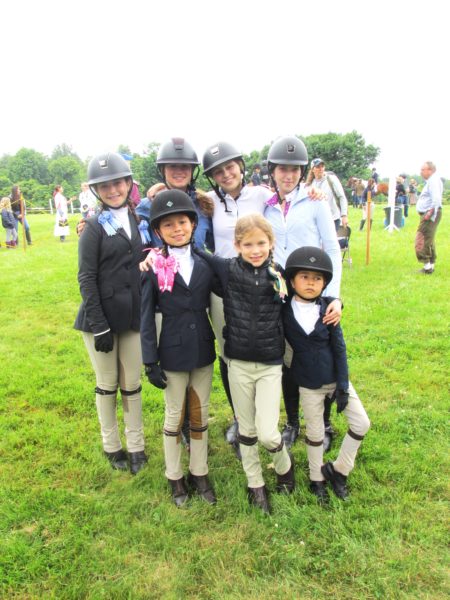By JoAnn Messina
The Greenwich Tree Conservancy (GTC) plants trees in partnership with the town and educates on the important role they play in our community’s overall health, but how do we protect trees? You may not be aware that we speak in support of tree health at both the local and state level.
Locally, as you have likely witnessed, many developers clearcut properties before beginning their work. The pace of this destructive practice appears to be increasing at the same time as stronger storms are creating more flooding. Entire lots are cleared of trees prior to seeking building permits to make it easier for new construction. There is no protection in place for our private trees.
Building applications that are non-conforming must come before the Planning and Zoning Commission. These applications often include extensive removal of trees and GTC advocates for a more respectful approach to development to better protect our tree canopy and the ecosystem services it provides our community. Throughout these discussions GTC and others supply well documented information on concerns including the resulting increase in erosion and flooding, the creation of heat-islands and other unanticipated outcomes that would negatively affect the neighborhood.
Should a resident or business want a tree removed within the public right-of-way (ROW), they submit a request to the Town Tree Warden. If the tree is determined to be healthy, and the applicant still wants it removed, the Tree Warden posts the tree for removal and if anyone objects within 10 days a tree hearing is scheduled. GTC often requests hearings to enable a closer look at the issues at hand. The tree warden listens to testimonies from all parties, including concerned residents, and makes a ruling within 3 days. Any ruling may be appealed to the Superior Court in Stamford.
At the state level we often encounter our primary electricity provider, Eversource. Eversource speaks about hardening their infrastructure, yet their practices appear to focus solely on removal and “enhanced” trimming of our trees and not on equipment upgrades or undergrounding of wires in municipal areas. In the past their pruning protocol had been to clear all tree material within 8 feet of transmission lines, causing a “V” in town trees.
More recently, Eversource has increased their tree trimming requesting a clearance of 10 feet along with a “fall zone”. This policy is currently being tested in several towns. To date these increased tree trimming policies have not been shown to create a failsafe electrical system and the great damage they cause to the health of town trees is well understood. For this reason, the GTC advocates at state Public Utilities Regulatory Authority (PURA) hearings to request that the benefits trees provide communities be considered when establishing utility company tree trimming guidelines. As town tree canopies are weakened by aggressive trimming the trees become more vulnerable to damage from strong storms. The GTC provides documented evidence and a voice of reason to PURA as they oversee our utility companies.
Additionally, we speak to the clear cutting by CT DOT along I-95 and the Metro North right-of-way that includes easements provided to Eversource. All three entities have removed sound buffers that are critical to adjacent neighborhoods, have decimated habitat for songbirds and pollinators, and left behind wide open areas for invasive plants to take over. Their management policy is to apply pesticides, in many cases directly adjacent to homes and schools with young children. This creates a vicious cycle which would not occur if a properly managed tree canopy had remained. Policies such as these has left GTC with a sense of responsibility to speak out and advocate at state agency hearings and directly to the Governor.
Currently in Connecticut there are very few regulations on private property trees. We continue to discuss how we might find a way to protect a portion of our private property trees, to maintain the critical water and soil systems we all depend upon. We assisted in the passage of a public tree ordinance and feel it is time to discuss some form of private tree protection. This can take one of many forms, permits to remove trees over a certain size or a percentage of coverage to remain. We should discuss canopy loss and canopy goals. It looks as if the time has come to broaden our understanding as a community and begin to take action. Please join us in discussion, advocacy or donation as we seek to preserve and protect our town tree canopy.
JoAnn Messina has been the Executive Director of the Greenwich Tree Conservancy for over 15 years and is currently a member of the P&Z Greenscape Task Force. Prior to that she chaired the First Selectman’s Parking and Traffic Committee, was a member of the Selectman’s Nominations Advisory Committee and was President of the LWVG.
This article originally appeared in the Greenwich Sentinel on July 8, 2022.

 At both Wednesday’s P&Z briefing and Thursday’s meeting, the main attraction was the proposed intersection improvements on Greenwich Avenue: Havemeyer/Arch and Fawcett/Grigg, though most comments focused on the former. The entire Avenue is a Historic National Register District.
At both Wednesday’s P&Z briefing and Thursday’s meeting, the main attraction was the proposed intersection improvements on Greenwich Avenue: Havemeyer/Arch and Fawcett/Grigg, though most comments focused on the former. The entire Avenue is a Historic National Register District. By Anne W. Semmes
By Anne W. Semmes





 After 2-1/2 years of work, the Greenwich Post Road Greenscape Task Force is entering the final leg of an important project to transform Route 1 from Port Chester to Stamford into a graceful tree-lined boulevard.
After 2-1/2 years of work, the Greenwich Post Road Greenscape Task Force is entering the final leg of an important project to transform Route 1 from Port Chester to Stamford into a graceful tree-lined boulevard. The Waterfall Project at Greenwich High School is a public-private partnership working in cooperation with the Board of Education, the Greenwich Sustainability Committee, and the Board of Selectmen of Greenwich.
The Waterfall Project at Greenwich High School is a public-private partnership working in cooperation with the Board of Education, the Greenwich Sustainability Committee, and the Board of Selectmen of Greenwich.